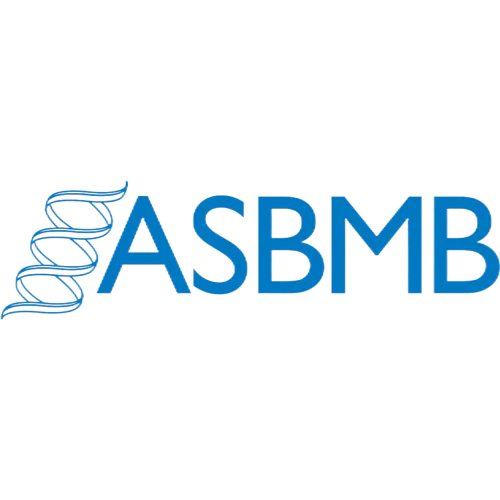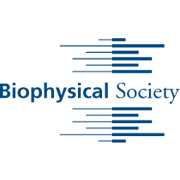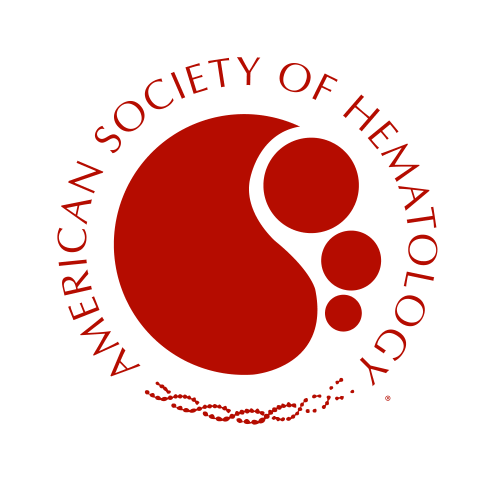Open Access


Science, volume 365, issue 6451, pages 342-347
The nucleolus functions as a phase-separated protein quality control compartment
Frottin Frédéric
1
,
Schueder Florian
2, 3
,
S Tiwary
4
,
Gupta R
1
,
Körner R.
1
,
Schlichthaerle T
2, 3
,
Cox Jürgen
4
,
Jungmann Ralf
2, 3
,
Hartl F.U.
1, 5
,
Hipp Mark Steffen
1, 5
1
Department of Cellular Biochemistry, Max Planck Institute of Biochemistry, D-82152 Martinsried, Germany.
|
2
Research Group “Molecular Imaging and Bionanotechnology,” Max Planck Institute of Biochemistry, D-82152 Martinsried, Germany.
|
3
Faculty of Physics and Center for Nanoscience, Ludwig Maximilian University, D-80539 Munich, Germany.
|
4
Research Group “Computational Systems Biochemistry,” Max Planck Institute of Biochemistry, D-82152 Martinsried, Germany.
|
5
Munich Cluster for Systems Neurology (SyNergy), D-80336 Munich, Germany.
|
Publication type: Journal Article
Publication date: 2019-07-26
Multidisciplinary
Abstract
Phasing-in quality control in the nucleus The fundamental process of protein quality control in the nucleus is not well understood. The nucleus contains several non–membrane-bound subcompartments forming liquid-like condensates. The largest of these is the nucleolus, the site of ribosome biogenesis. Frottin et al. found that metastable nuclear proteins that misfold upon heat stress enter the nucleolus. In the nucleolus, they avoid irreversible aggregation and remain competent for heat shock protein 70–dependent refolding upon recovery from stress. Prolonged stress or the uptake of proteins associated with neurodegenerative diseases prevented this reversibility. Thus, the properties of a phase-separated compartment can assist in protein quality control. Science, this issue p. 342 The liquid-like nucleolar compartment prevents irreversible protein aggregation and promotes nuclear proteome maintenance. INTRODUCTION Cells have evolved quality control mechanisms that operate under normal growth conditions and during stress to maintain protein homeostasis (proteostasis) and prevent the formation of potentially toxic aggregates. Research in recent decades has identified complex quality control systems in the cytoplasm that mediate protein folding, prevent misfolding, and cooperate in protein degradation with the proteasome and autophagy pathways. Compartment-specific proteostasis networks and stress response pathways have also been described for the endoplasmic reticulum and mitochondria. In contrast, relatively little is known about protein quality control in the nucleus. Proteins enter the nucleus in a folded state, so chaperone machinery specific for de novo folding is not required. However, the nuclear proteome is rich in stress-sensitive, metastable proteins, which suggests that effective protein quality control mechanisms are in place to ensure conformational maintenance. The nucleus contains several non–membrane-bound subcompartments. The largest of these is the nucleolus, the site of ribosome biogenesis. During stress, Hsp70 and other molecular chaperones accumulate in the nucleolus, presumably to protect unassembled ribosomal proteins against aggregation. The nucleolus consists of liquid-like phases or domains that have differential surface tension and do not intermix. The outermost of these, the granular component (GC), is rich in negatively charged proteins such as nucleophosmin and nucleolin, which, combined with RNA, can undergo phase separation into liquid droplets in vitro, as shown for nucleophosmin. RATIONALE Nuclear protein aggregates have been observed in various neurodegenerative disorders such as amyotrophic lateral sclerosis and Huntington’s disease, but protein quality control in the nucleus is not well understood. Here, we used a combination of fluorescence imaging, biochemical analyses, and proteomics to investigate the fate of stress-denatured and aberrant proteins in the nucleus, focusing specifically on the role of the nucleolus and its phase-separated nature in protein quality control. RESULTS Upon heat stress, misfolded nuclear proteins entered the liquid-like GC phase of the nucleolus, where they associated with proteins including nucleophosmin and adopted a state of low mobility. As a consequence, a fraction of nucleophosmin and nucleolin also converted to a less dynamic state. Storage in the GC phase effectively prevented the irreversible aggregation of misfolded protein species, allowing their extraction and refolding upon recovery from stress in a Hsp70-dependent manner. We identified ~200 different proteins that reversibly partitioned upon stress into the immobile substate of the GC, entering either from the nucleoplasm or from within the nucleolus. Disruption of the GC phase resulted in the formation of stable aggregates of stress-denatured proteins in the nucleoplasm, which exerted toxic effects by sequestering bystander proteins. Notably, the capacity of the nucleolus to store misfolded proteins proved to be limited. Prolonged stress or the uptake of aberrant proteins associated with neurodegenerative diseases led to a transition of the GC phase from a liquid-like to a solid state, with loss of reversibility and nucleolar dysfunction. CONCLUSION The liquid-like GC phase of the nucleolus functions as a non–membrane-bound protein quality control compartment. It is characterized by a remarkable chaperone-like capacity to temporarily store misfolded proteins, preventing their irreversible aggregation and maintaining them as competent for Hsp70-assisted refolding. Nucleoplasmic proteins exit the nucleolus upon refolding, and nucleolar proteins resume their functional state. Our findings provide an example of how the properties of a non–membrane-bound, phase-separated compartment can be used in protein quality control, a fundamental biological function. Inserting misfolded proteins into the nucleolus prevents irreversible aggregation. Upon cell stress, misfolded proteins enter the GC phase of the nucleolus to be stored in a state competent for Hsp70-dependent refolding during recovery. Potentially toxic, irreversible aggregates form when transfer into the nucleolus is prevented. A 3D-rendered high-resolution image of the nucleolus is shown: GC, granular component (red); DFC, dense fibrillar component (white); FC, fibrillar center (cyan). The nuclear proteome is rich in stress-sensitive proteins, which suggests that effective protein quality control mechanisms are in place to ensure conformational maintenance. We investigated the role of the nucleolus in this process. In mammalian tissue culture cells under stress conditions, misfolded proteins entered the granular component (GC) phase of the nucleolus. Transient associations with nucleolar proteins such as NPM1 conferred low mobility to misfolded proteins within the liquid-like GC phase, avoiding irreversible aggregation. Refolding and extraction of proteins from the nucleolus during recovery from stress was Hsp70-dependent. The capacity of the nucleolus to store misfolded proteins was limited, and prolonged stress led to a transition of the nucleolar matrix from liquid-like to solid, with loss of reversibility and dysfunction in quality control. Thus, we suggest that the nucleolus has chaperone-like properties and can promote nuclear protein maintenance under stress.
Citations by journals
|
2
4
6
8
10
12
|
|
|
Nature Communications

|

Nature Communications
12 publications, 3.63%
|
|
Journal of Molecular Biology

|

Journal of Molecular Biology
6 publications, 1.81%
|
|
Proceedings of the National Academy of Sciences of the United States of America

|

Proceedings of the National Academy of Sciences of the United States of America
6 publications, 1.81%
|
|
International Journal of Molecular Sciences

|

International Journal of Molecular Sciences
5 publications, 1.51%
|
|
Cells

|

Cells
5 publications, 1.51%
|
|
Frontiers in Molecular Biosciences

|

Frontiers in Molecular Biosciences
5 publications, 1.51%
|
|
Frontiers in Cell and Developmental Biology

|

Frontiers in Cell and Developmental Biology
5 publications, 1.51%
|
|
Nature Cell Biology

|

Nature Cell Biology
5 publications, 1.51%
|
|
iScience

|

iScience
5 publications, 1.51%
|
|
eLife

|

eLife
5 publications, 1.51%
|
|
Journal of Cell Biology

|

Journal of Cell Biology
5 publications, 1.51%
|
|
Genes

|

Genes
4 publications, 1.21%
|
|
Biomolecules

|

Biomolecules
4 publications, 1.21%
|
|
Frontiers in Genetics

|

Frontiers in Genetics
4 publications, 1.21%
|
|
Cell Reports

|

Cell Reports
4 publications, 1.21%
|
|
Cell

|

Cell
3 publications, 0.91%
|
|
Cancers

|

Cancers
3 publications, 0.91%
|
|
Nature

|

Nature
3 publications, 0.91%
|
|
Frontiers in Cellular Neuroscience

|

Frontiers in Cellular Neuroscience
3 publications, 0.91%
|
|
Nature Reviews Molecular Cell Biology

|

Nature Reviews Molecular Cell Biology
3 publications, 0.91%
|
|
Communications Biology

|

Communications Biology
3 publications, 0.91%
|
|
Cellular and Molecular Life Sciences

|

Cellular and Molecular Life Sciences
3 publications, 0.91%
|
|
Trends in Cell Biology

|

Trends in Cell Biology
3 publications, 0.91%
|
|
Trends in Biochemical Sciences

|

Trends in Biochemical Sciences
3 publications, 0.91%
|
|
Journal of Biological Chemistry

|

Journal of Biological Chemistry
3 publications, 0.91%
|
|
Current Opinion in Structural Biology

|

Current Opinion in Structural Biology
3 publications, 0.91%
|
|
Nucleic Acids Research

|

Nucleic Acids Research
3 publications, 0.91%
|
|
EMBO Reports

|

EMBO Reports
3 publications, 0.91%
|
|
Science advances

|

Science advances
3 publications, 0.91%
|
|
2
4
6
8
10
12
|
Citations by publishers
|
10
20
30
40
50
60
70
|
|
|
Elsevier

|

Elsevier
63 publications, 19.03%
|
|
Springer Nature

|

Springer Nature
57 publications, 17.22%
|
|
Multidisciplinary Digital Publishing Institute (MDPI)

|

Multidisciplinary Digital Publishing Institute (MDPI)
25 publications, 7.55%
|
|
Frontiers Media S.A.

|

Frontiers Media S.A.
23 publications, 6.95%
|
|
Wiley

|

Wiley
17 publications, 5.14%
|
|
Oxford University Press

|

Oxford University Press
7 publications, 2.11%
|
|
Rockefeller University Press

|

Rockefeller University Press
7 publications, 2.11%
|
|
Cold Spring Harbor Laboratory

|

Cold Spring Harbor Laboratory
7 publications, 2.11%
|
|
EMBO press

|

EMBO press
6 publications, 1.81%
|
|
Proceedings of the National Academy of Sciences (PNAS)

|

Proceedings of the National Academy of Sciences (PNAS)
6 publications, 1.81%
|
|
American Association for the Advancement of Science (AAAS)

|

American Association for the Advancement of Science (AAAS)
5 publications, 1.51%
|
|
eLife Sciences Publications

|

eLife Sciences Publications
5 publications, 1.51%
|
|
The Company of Biologists

|

The Company of Biologists
4 publications, 1.21%
|
|
American Society for Biochemistry and Molecular Biology

|

American Society for Biochemistry and Molecular Biology
4 publications, 1.21%
|
|
Portland Press

|

Portland Press
3 publications, 0.91%
|
|
American Chemical Society (ACS)

|

American Chemical Society (ACS)
3 publications, 0.91%
|
|
Royal Society of Chemistry (RSC)

|

Royal Society of Chemistry (RSC)
3 publications, 0.91%
|
|
Taylor & Francis

|

Taylor & Francis
3 publications, 0.91%
|
|
The Royal Society

|

The Royal Society
2 publications, 0.6%
|
|
Public Library of Science (PLoS)

|

Public Library of Science (PLoS)
2 publications, 0.6%
|
|
American Association for Cancer Research (AACR)

|

American Association for Cancer Research (AACR)
2 publications, 0.6%
|
|
Acta Naturae Ltd
|
Acta Naturae Ltd, 1, 0.3%
Acta Naturae Ltd
1 publication, 0.3%
|
|
Mary Ann Liebert

|

Mary Ann Liebert
1 publication, 0.3%
|
|
Baishideng Publishing Group

|

Baishideng Publishing Group
1 publication, 0.3%
|
|
Shi Jie Wei Chang Bing Xue Za Zhi She
|
Shi Jie Wei Chang Bing Xue Za Zhi She, 1, 0.3%
Shi Jie Wei Chang Bing Xue Za Zhi She
1 publication, 0.3%
|
|
IOP Publishing

|

IOP Publishing
1 publication, 0.3%
|
|
Biophysical Society

|

Biophysical Society
1 publication, 0.3%
|
|
Pleiades Publishing

|

Pleiades Publishing
1 publication, 0.3%
|
|
American Society of Hematology

|

American Society of Hematology
1 publication, 0.3%
|
|
10
20
30
40
50
60
70
|
- We do not take into account publications that without a DOI.
- Statistics recalculated only for publications connected to researchers, organizations and labs registered on the platform.
- Statistics recalculated weekly.
{"yearsCitations":{"type":"bar","data":{"show":true,"labels":[2019,2020,2021,2022,2023,2024],"ids":[0,0,0,0,0,0],"codes":[0,0,0,0,0,0],"imageUrls":["","","","","",""],"datasets":[{"label":"Citations number","data":[16,66,91,70,70,18],"backgroundColor":["#3B82F6","#3B82F6","#3B82F6","#3B82F6","#3B82F6","#3B82F6"],"percentage":["4.83","19.94","27.49","21.15","21.15","5.44"],"barThickness":null}]},"options":{"indexAxis":"x","maintainAspectRatio":true,"scales":{"y":{"ticks":{"precision":0,"autoSkip":false,"font":{"family":"Montserrat"},"color":"#000000"}},"x":{"ticks":{"stepSize":1,"precision":0,"font":{"family":"Montserrat"},"color":"#000000"}}},"plugins":{"legend":{"position":"top","labels":{"font":{"family":"Montserrat"},"color":"#000000"}},"title":{"display":true,"text":"Citations per year","font":{"size":24,"family":"Montserrat","weight":600},"color":"#000000"}}}},"journals":{"type":"bar","data":{"show":true,"labels":["Nature Communications","Journal of Molecular Biology","Proceedings of the National Academy of Sciences of the United States of America","International Journal of Molecular Sciences","Cells","Frontiers in Molecular Biosciences","Frontiers in Cell and Developmental Biology","Nature Cell Biology","iScience","eLife","Journal of Cell Biology","Genes","Biomolecules","Frontiers in Genetics","Cell Reports","Cell","Cancers","Nature","Frontiers in Cellular Neuroscience","Nature Reviews Molecular Cell Biology","Communications Biology","Cellular and Molecular Life Sciences","Trends in Cell Biology","Trends in Biochemical Sciences","Journal of Biological Chemistry","Current Opinion in Structural Biology","Nucleic Acids Research","EMBO Reports","Science advances"],"ids":[3231,19701,306,14627,25293,3133,12128,22534,6073,24138,867,8879,13780,13242,9130,16552,22471,14611,17836,10207,11778,5151,4177,4668,19451,13702,23904,2390,23003],"codes":[0,0,0,0,0,0,0,0,0,0,0,0,0,0,0,0,0,0,0,0,0,0,0,0,0,0,0,0,0],"imageUrls":["\/storage\/images\/resized\/voXLqlsvTwv5p3iMQ8Dhs95nqB4AXOG7Taj7G4ra_medium.webp","\/storage\/images\/resized\/GDnYOu1UpMMfMMRV6Aqle4H0YLLsraeD9IP9qScG_medium.webp","\/storage\/images\/resized\/mxFdPe9qujsfvfYfcN0QOclAiYORFb0xrRlwV8gs_medium.webp","\/storage\/images\/resized\/MjH1ITP7lMYGxeqUZfkt2BnVLgjkk413jwBV97XX_medium.webp","\/storage\/images\/resized\/MjH1ITP7lMYGxeqUZfkt2BnVLgjkk413jwBV97XX_medium.webp","\/storage\/images\/resized\/4QWA67eqfcfyOiA8Wk7YnqroHFqQbTsmDJUYTCTg_medium.webp","\/storage\/images\/resized\/4QWA67eqfcfyOiA8Wk7YnqroHFqQbTsmDJUYTCTg_medium.webp","\/storage\/images\/resized\/voXLqlsvTwv5p3iMQ8Dhs95nqB4AXOG7Taj7G4ra_medium.webp","\/storage\/images\/resized\/GDnYOu1UpMMfMMRV6Aqle4H0YLLsraeD9IP9qScG_medium.webp","\/storage\/images\/resized\/eIZgkq1MRZyJ3hBkdupnUUv7wgB6zCl9D99SlPN5_medium.webp","\/storage\/images\/resized\/lEA1FyUnFAZR1DchuczZi5bjAixG3TNeWVz6oF4R_medium.webp","\/storage\/images\/resized\/MjH1ITP7lMYGxeqUZfkt2BnVLgjkk413jwBV97XX_medium.webp","\/storage\/images\/resized\/MjH1ITP7lMYGxeqUZfkt2BnVLgjkk413jwBV97XX_medium.webp","\/storage\/images\/resized\/4QWA67eqfcfyOiA8Wk7YnqroHFqQbTsmDJUYTCTg_medium.webp","\/storage\/images\/resized\/GDnYOu1UpMMfMMRV6Aqle4H0YLLsraeD9IP9qScG_medium.webp","\/storage\/images\/resized\/GDnYOu1UpMMfMMRV6Aqle4H0YLLsraeD9IP9qScG_medium.webp","\/storage\/images\/resized\/MjH1ITP7lMYGxeqUZfkt2BnVLgjkk413jwBV97XX_medium.webp","\/storage\/images\/resized\/voXLqlsvTwv5p3iMQ8Dhs95nqB4AXOG7Taj7G4ra_medium.webp","\/storage\/images\/resized\/4QWA67eqfcfyOiA8Wk7YnqroHFqQbTsmDJUYTCTg_medium.webp","\/storage\/images\/resized\/voXLqlsvTwv5p3iMQ8Dhs95nqB4AXOG7Taj7G4ra_medium.webp","\/storage\/images\/resized\/voXLqlsvTwv5p3iMQ8Dhs95nqB4AXOG7Taj7G4ra_medium.webp","\/storage\/images\/resized\/voXLqlsvTwv5p3iMQ8Dhs95nqB4AXOG7Taj7G4ra_medium.webp","\/storage\/images\/resized\/GDnYOu1UpMMfMMRV6Aqle4H0YLLsraeD9IP9qScG_medium.webp","\/storage\/images\/resized\/GDnYOu1UpMMfMMRV6Aqle4H0YLLsraeD9IP9qScG_medium.webp","\/storage\/images\/resized\/OuA6WPZekwEiUM99mP2pSqj4yHPxHezM6xgLhAjO_medium.webp","\/storage\/images\/resized\/GDnYOu1UpMMfMMRV6Aqle4H0YLLsraeD9IP9qScG_medium.webp","\/storage\/images\/resized\/yNSijlgQghQF53VZuyFLA30CKDe4j3HK74Vtpnxa_medium.webp","\/storage\/images\/resized\/1UiI5HycPsvulDeXOySNp0OuaMMmIKfPnsdKPyH0_medium.webp","\/storage\/images\/resized\/s10mcsCV4OAUg9O2KrqOquQC0PhyLMI8hUUkuflM_medium.webp"],"datasets":[{"label":"","data":[12,6,6,5,5,5,5,5,5,5,5,4,4,4,4,3,3,3,3,3,3,3,3,3,3,3,3,3,3],"backgroundColor":["#3B82F6","#3B82F6","#3B82F6","#3B82F6","#3B82F6","#3B82F6","#3B82F6","#3B82F6","#3B82F6","#3B82F6","#3B82F6","#3B82F6","#3B82F6","#3B82F6","#3B82F6","#3B82F6","#3B82F6","#3B82F6","#3B82F6","#3B82F6","#3B82F6","#3B82F6","#3B82F6","#3B82F6","#3B82F6","#3B82F6","#3B82F6","#3B82F6","#3B82F6"],"percentage":[3.63,1.81,1.81,1.51,1.51,1.51,1.51,1.51,1.51,1.51,1.51,1.21,1.21,1.21,1.21,0.91,0.91,0.91,0.91,0.91,0.91,0.91,0.91,0.91,0.91,0.91,0.91,0.91,0.91],"barThickness":13}]},"options":{"indexAxis":"y","maintainAspectRatio":false,"scales":{"y":{"ticks":{"precision":0,"autoSkip":false,"font":{"family":"Montserrat"},"color":"#000000"}},"x":{"ticks":{"stepSize":null,"precision":0,"font":{"family":"Montserrat"},"color":"#000000"}}},"plugins":{"legend":{"position":"top","labels":{"font":{"family":"Montserrat"},"color":"#000000"}},"title":{"display":true,"text":"Journals","font":{"size":24,"family":"Montserrat","weight":600},"color":"#000000"}}}},"publishers":{"type":"bar","data":{"show":true,"labels":["Elsevier","Springer Nature","Multidisciplinary Digital Publishing Institute (MDPI)","Frontiers Media S.A.","Wiley","Oxford University Press","Rockefeller University Press","Cold Spring Harbor Laboratory","EMBO press","Proceedings of the National Academy of Sciences (PNAS)","American Association for the Advancement of Science (AAAS)","eLife Sciences Publications","The Company of Biologists","American Society for Biochemistry and Molecular Biology","Portland Press","American Chemical Society (ACS)","Royal Society of Chemistry (RSC)","Taylor & Francis","The Royal Society","Public Library of Science (PLoS)","American Association for Cancer Research (AACR)","Acta Naturae Ltd","Mary Ann Liebert","Baishideng Publishing Group","Shi Jie Wei Chang Bing Xue Za Zhi She","IOP Publishing","Biophysical Society","Pleiades Publishing","American Society of Hematology"],"ids":[17,8,202,208,11,19,22,6909,9415,162,189,6627,872,2090,801,40,123,18,259,344,2286,7905,230,7719,4710,2075,1454,101,2252],"codes":[0,0,0,0,0,0,0,0,0,0,0,0,0,0,0,0,0,0,0,0,0,0,0,0,0,0,0,0,0],"imageUrls":["\/storage\/images\/resized\/GDnYOu1UpMMfMMRV6Aqle4H0YLLsraeD9IP9qScG_medium.webp","\/storage\/images\/resized\/voXLqlsvTwv5p3iMQ8Dhs95nqB4AXOG7Taj7G4ra_medium.webp","\/storage\/images\/resized\/MjH1ITP7lMYGxeqUZfkt2BnVLgjkk413jwBV97XX_medium.webp","\/storage\/images\/resized\/4QWA67eqfcfyOiA8Wk7YnqroHFqQbTsmDJUYTCTg_medium.webp","\/storage\/images\/resized\/bRyGpdm98BkAUYiK1YFNpl5Z7hPu6Gd87gbIeuG3_medium.webp","\/storage\/images\/resized\/yNSijlgQghQF53VZuyFLA30CKDe4j3HK74Vtpnxa_medium.webp","\/storage\/images\/resized\/lEA1FyUnFAZR1DchuczZi5bjAixG3TNeWVz6oF4R_medium.webp","\/storage\/images\/resized\/hg4jJjT8wVGtHstBCc0zk465Mg9pLx3G4odCDOqE_medium.webp","\/storage\/images\/resized\/1UiI5HycPsvulDeXOySNp0OuaMMmIKfPnsdKPyH0_medium.webp","\/storage\/images\/resized\/mxFdPe9qujsfvfYfcN0QOclAiYORFb0xrRlwV8gs_medium.webp","\/storage\/images\/resized\/s10mcsCV4OAUg9O2KrqOquQC0PhyLMI8hUUkuflM_medium.webp","\/storage\/images\/resized\/eIZgkq1MRZyJ3hBkdupnUUv7wgB6zCl9D99SlPN5_medium.webp","\/storage\/images\/resized\/ko5EaisKGm66J1hHXtfEgVEeeWb9uOcMofpNuf0a_medium.webp","\/storage\/images\/resized\/OuA6WPZekwEiUM99mP2pSqj4yHPxHezM6xgLhAjO_medium.webp","\/storage\/images\/resized\/nUqNrP9GnM1t0BrAIXp1LBodjU8aIJ2Fk4pLfGhZ_medium.webp","\/storage\/images\/resized\/iLiQsFqFaSEx6chlGQ5fbAwF6VYU3WWa08hkss0g_medium.webp","\/storage\/images\/resized\/leiAYcRDGTSl5B1eCnwpSGqmDEUEfDPPoYisFGhT_medium.webp","\/storage\/images\/resized\/5YZtvLvkPZuc2JHOaZsjCvGSHFCuC3drUwN3YAc5_medium.webp","\/storage\/images\/resized\/BHBStD1OkQqtKFRRjS5njgNe7bXCAEgaDQVK7GTA_medium.webp","\/storage\/images\/resized\/PRGhlgB4OKRltSNtT39eA6wlnOTGRap1QQ6FQHih_medium.webp","\/storage\/images\/resized\/cfuVw6XIq2mATDNJdXiose3W8qYbkmaVSpHoP8XL_medium.webp","","\/storage\/images\/resized\/Zy5YST233rzRbZP24I24MzZm64hz20ZV9qQopmMn_medium.webp","\/storage\/images\/resized\/bKOjgSt9mSGUD9fzKZyqcKSIgDCDSMd1ZWjJOZzx_medium.webp","","\/storage\/images\/resized\/LsKy6OnmmmRGcAU6CZgWQvNiP1polbaSLNrN7zqj_medium.webp","\/storage\/images\/resized\/Bmz9XNb2QDptmPTa5N8huM54tShVewUj8fZqKFRy_medium.webp","\/storage\/images\/resized\/oZgeErrVFhuDksyqFURLvYS1wtVSBWczh001igGo_medium.webp","\/storage\/images\/resized\/QMhhcrIUiVtFnND3WWZ7hIbu6GYeoRoA2zoVsMEX_medium.webp"],"datasets":[{"label":"","data":[63,57,25,23,17,7,7,7,6,6,5,5,4,4,3,3,3,3,2,2,2,1,1,1,1,1,1,1,1],"backgroundColor":["#3B82F6","#3B82F6","#3B82F6","#3B82F6","#3B82F6","#3B82F6","#3B82F6","#3B82F6","#3B82F6","#3B82F6","#3B82F6","#3B82F6","#3B82F6","#3B82F6","#3B82F6","#3B82F6","#3B82F6","#3B82F6","#3B82F6","#3B82F6","#3B82F6","#3B82F6","#3B82F6","#3B82F6","#3B82F6","#3B82F6","#3B82F6","#3B82F6","#3B82F6"],"percentage":[19.03,17.22,7.55,6.95,5.14,2.11,2.11,2.11,1.81,1.81,1.51,1.51,1.21,1.21,0.91,0.91,0.91,0.91,0.6,0.6,0.6,0.3,0.3,0.3,0.3,0.3,0.3,0.3,0.3],"barThickness":13}]},"options":{"indexAxis":"y","maintainAspectRatio":false,"scales":{"y":{"ticks":{"precision":0,"autoSkip":false,"font":{"family":"Montserrat"},"color":"#000000"}},"x":{"ticks":{"stepSize":null,"precision":0,"font":{"family":"Montserrat"},"color":"#000000"}}},"plugins":{"legend":{"position":"top","labels":{"font":{"family":"Montserrat"},"color":"#000000"}},"title":{"display":true,"text":"Publishers","font":{"size":24,"family":"Montserrat","weight":600},"color":"#000000"}}}}}
Metrics
Cite this
GOST |
RIS |
BibTex |
MLA
Cite this
GOST
Copy
Frottin F. et al. The nucleolus functions as a phase-separated protein quality control compartment // Science. 2019. Vol. 365. No. 6451. pp. 342-347.
GOST all authors (up to 50)
Copy
Frottin F., Schueder F., S T., Gupta R., Körner R., Schlichthaerle T., Cox J., Jungmann R., Hartl F., Hipp M. S. The nucleolus functions as a phase-separated protein quality control compartment // Science. 2019. Vol. 365. No. 6451. pp. 342-347.
Cite this
RIS
Copy
TY - JOUR
DO - 10.1126/science.aaw9157
UR - https://doi.org/10.1126%2Fscience.aaw9157
TI - The nucleolus functions as a phase-separated protein quality control compartment
T2 - Science
AU - Frottin, Frédéric
AU - Schueder, Florian
AU - S, Tiwary
AU - Gupta, R
AU - Körner, R.
AU - Schlichthaerle, T
AU - Cox, Jürgen
AU - Jungmann, Ralf
AU - Hartl, F.U.
AU - Hipp, Mark Steffen
PY - 2019
DA - 2019/07/26 00:00:00
PB - American Association for the Advancement of Science (AAAS)
SP - 342-347
IS - 6451
VL - 365
SN - 0036-8075
SN - 1095-9203
ER -
Cite this
BibTex
Copy
@article{2019_Frottin,
author = {Frédéric Frottin and Florian Schueder and Tiwary S and R Gupta and R. Körner and T Schlichthaerle and Jürgen Cox and Ralf Jungmann and F.U. Hartl and Mark Steffen Hipp},
title = {The nucleolus functions as a phase-separated protein quality control compartment},
journal = {Science},
year = {2019},
volume = {365},
publisher = {American Association for the Advancement of Science (AAAS)},
month = {jul},
url = {https://doi.org/10.1126%2Fscience.aaw9157},
number = {6451},
pages = {342--347},
doi = {10.1126/science.aaw9157}
}
Cite this
MLA
Copy
Frottin, Frédéric, et al. “The nucleolus functions as a phase-separated protein quality control compartment.” Science, vol. 365, no. 6451, Jul. 2019, pp. 342-347. https://doi.org/10.1126%2Fscience.aaw9157.
